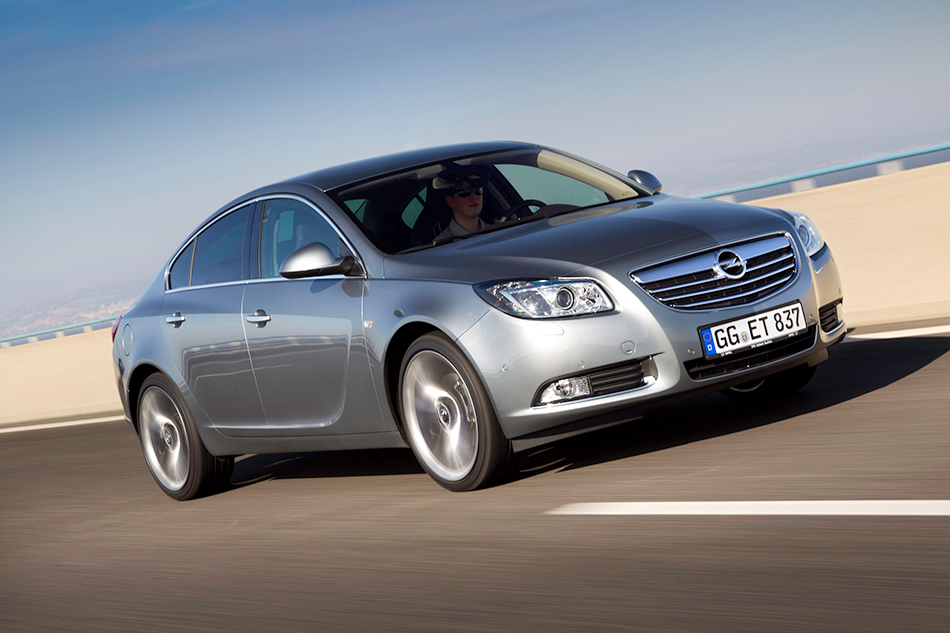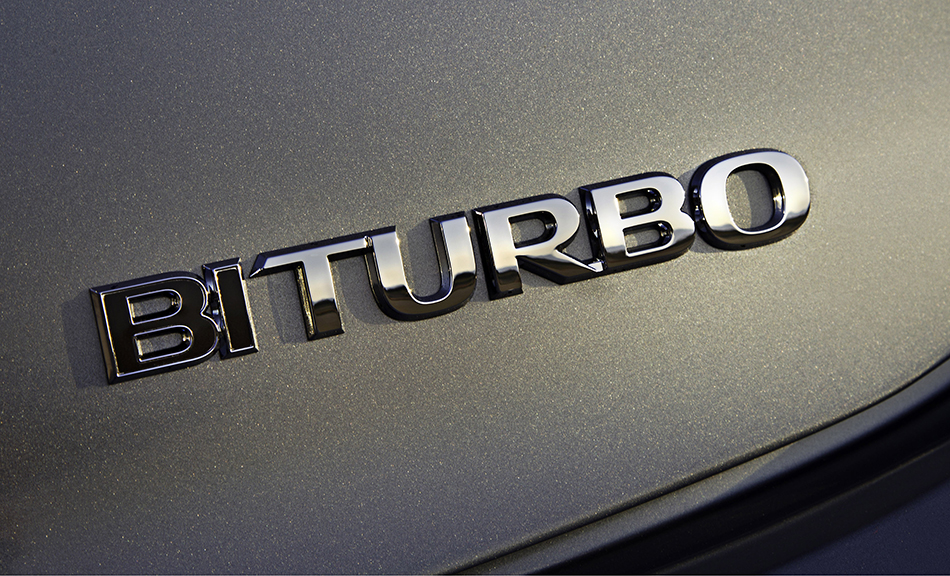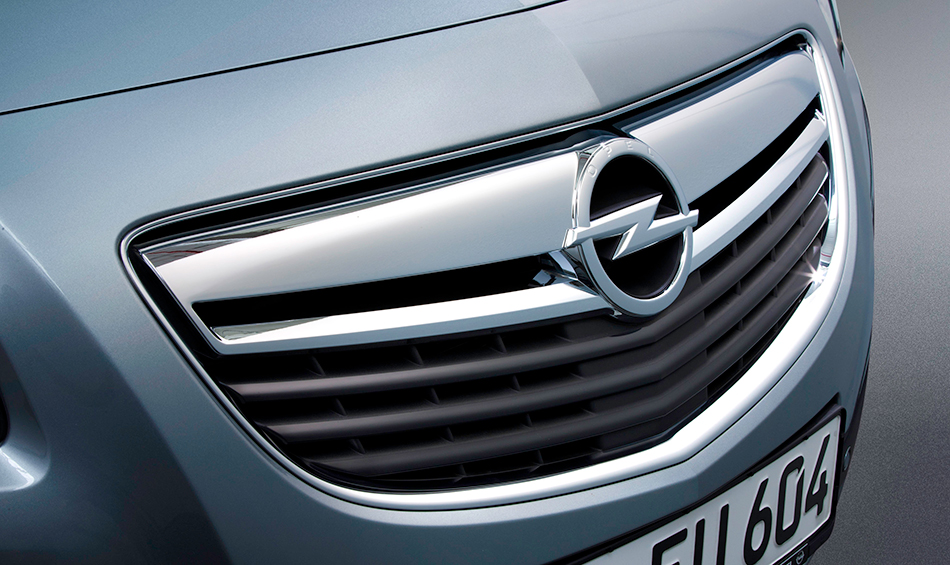Opel continues to enhance and refine its highly successful flagship, the Insignia. Ready for 2012, Opel crowns the diesel offering with a new, dynamic and highly efficient BiTurbo engine. The 2.0-liter CDTI power unit not only delivers 143 kW/195 hp and 400 Nm of torque; the four-door sedan with front wheel drive and manual transmission only uses 4.9 liters per 100 kilometers (129 g/km CO2). The Insignia 2.0 BiTurbo CDTI is thus one of the most fuel efficient mid-size cars. Starting in spring 2012, the all-wheel drive (AWD) variants can additionally be ordered with the SuperSport Chassis that comes complete with the front-wheel suspension of the Insignia OPC (Opel Performance Center). This suspension is fitted with high performance struts (HiPerStruts). This further enhances the driving dynamics. Furthermore, active safety in the Insignia is increased with assistance systems.

Opel's Top Model: Award-winning and successful
Since its debut in 2008, the Insignia has won some 50 national and international prizes, including the prestigious "Car of The Year Award 2009". The praise by the car experts is also reflected in the continuing strong customer demand: Opel's top model has achieved close to half-a-million sales. In 2011, the Insignia boasted strong growth rates in key markets (including the UK, Russia and Turkey). In Germany, the 5-door hatchback sedan is the undisputed leader of its segment in terms of sales. Opel can also boast the most economical gasoline engine of the mid-size with the 103 kW/140 hp Insignia 1.4 Turbo ecoFLEX unit (5.7 liters/100 km, 134 g/km CO2). The latest technological advances are the basis for the continued success of the top model from Rüsselsheim and also fit in well with the growing trend towards high value extras.
Intelligent BiTurbo diesel technology
The highlight of the four-cylinder common rail engine is the sequential double turbo system with two charging stages. This technology has so far been limited to a few higher priced brands. However, Opel is now making it accessible to a wider segment of customers. Buyers have the option to combine the new engine with front or all-wheel drive (AWD). The Insignia 2.0 BiTurbo CDTI is available in all body styles.
The new 2.0 BiTurbo CDTI engine with 143 kW/195 hp and 400 Nm of torque is designed to deliver especially agile, responsive and fluid performance under acceleration. The Insignia front-wheel drive (FWD) sedan with six-gear manual transmission accelerates from 0 to 100 km/h in just 8.7 seconds and has a top speed of 230 km/h. At just 4.9 liters per 100 kilometers, fuel consumption and emissions (129 g/km CO2) remainextremely low. All versions with manual transmission are equipped with Start/Stop, making the Insignia one of the most fuel efficient mid-size cars.
"In this class of power and torque, six-cylinder diesel engines with around three liter displacements are the usual choice. With our BiTurbo technology smaller engines produce even more output while enabling 30 percent lower fuel consumption and emissions," says Insignia chief engineer, Volker Scharf. "This is a very good example of successful ‘downsizing' by Opel."
Sequential charging ensures fluid power delivery
In the Insignia's innovative BiTurbo system two turbochargers of different sizes work either separately or together. Among its competitors, Opel is the only manufacturer in the mid-size car segment to offer this sophisticated sequential turbocharging system in a diesel engine. The smaller turbocharger accelerates especially quickly at low engine speeds. This means the accelerator pedal responds without delay and the undesired "turbo lag" effect is prevented. Starting at 1250 rpm, the driver can already draw on 320 Nm of torque and at 1750 rpm maximum torque of 400 Nm is provided.
In the mid-range of rpm both turbochargers operate together, with the larger turbocharger pre-compressing the intake air, before it is fully compressed in the smaller one. A bypass valve is controlled continuously to pass on part of the exhaust gases to the larger turbo. As a result, the driver continues to enjoy powerful acceleration. At higher rpm (from around 2500 to 3000 rpm) all the gases flow directly to the larger turbocharger, maintaining the fluid power delivery at higher speeds.
The main focus in the development in the 2.0 BiTurbo CDTI engine was to ensure a rapid build-up of charge air pressure in the low rpm range, while giving the accelerator added responsiveness in the mid rpm range. The engine air is ideally adjusted according to the rpm range and the needs of the two turbochargers of different size. At low rpms an additional, water-cooled intercooler that is exclusively linked to the small turbocharger ensures that the small volume of air passes in a short and direct path to the combustion chamber. In the mid rpm range, the bigger and more powerful turbocharger becomes increasingly involved in the air supply. Its larger stream of air is cooled by the bigger, conventional intercooler. Opel is the first car brand to use such a "twin cooler system".

Opel has further optimized its engine efficiency by employing its innovative Cleantech technology which controls the combustion process via a closed loop electronic circuit. Sensors fitted to the glow plugs measure the pressure with a resolution of one degree crank-angle more than 100,000 times a minute, ensuring that the engine always operates in the optimum window of maximum performance, as well as minimum fuel consumption and CO2 emissions. The third generation Common Rail direct injection system which runs at pressures of up to 2,000 bar, passes on fuel to ultra-precise, piezoelectrically activated nozzles which deliver up to eight injections per work cycle. This provides a very precise combustion process with minimized noise and emissions.
With the new top-of-the-line 2.0 BiTurbo CDTI, the Opel Insignia range now boasts a spectrum of four common-rail direct injection turbo diesels with power outputs ranging from 81 kW/110 hp to 143 kW/195 hp.
Unparalleled offer in the mid-size segment
While the September 2011 model year enhancement of the Insignia family was particularly focused on lowering the fuel consumption of its best-selling models (new 1.4 Turbo ecoFLEX gasoline with only 134 g/km CO2 and new version of the 118 kW/160 hp, 2.0 CDTI ecoFLEX with only 115g CO2), the new features introduced early 2012 add significant premium qualities and technologies to Opel´s flagship model. The new 2.0 BiTurbo CDTI is available in all Insignia body variants - four-door hatchback, five-door sedan and the Sports Tourer station wagon. Customers can also opt for a six-speed manual or automatic transmission as well as for front or all-wheel drive (with rear electronic slip differential).
Driving dynamics can be further enhanced by the optional mechatronic adaptive FlexRide chassis system. This level of choice is unparalleled in the mid-size segment.
SuperSport Chassis with High Performance Struts available for all Insignia 4x4
Another major innovation for all four-wheel drive versions of the Insignia is the optionally available SuperSport chassis. This technology which was previously confined to the sporty top-of-the-line OPC model (Opel Performance Center) will be available to a wider scope of customers in spring 2012. The package comprises the mechatronic FlexRide system complete with electronically adaptive damping system, a high performance Brembo brake system and the HiPerStrut (High Performance Struts) front wheel suspension known from the 239 kW/325 hp Insignia OPC which further optimizes handling and steering precision.
New radar-based driver assistance systems further enhance safety
Not only performance enhancing features have been given a sharper edge: active safety has also received a significant boost thanks to a new radar system located behind the front grille. Insignia customers can now opt for the radar-based Adaptive Cruise Control (ACC). The new system maintains the selected speed during cruising, yet automatically adjusts the vehicle speed according to traffic conditions to secure a pre-set safety distance with vehicles ahead. Further functionalities are available in conjunction with the radar system: The Following Distance Indication (FDI) informs the driver visually about the distance to the car ahead; the Forward Collision Alert (FCA) provides a visual and an audible signal to warn the driver of an imminent collision with the car ahead; and the Collision Imminent Braking (CIB) automatically decelerates the vehicle if the risk of a collision is detected.

Source: Opel






















